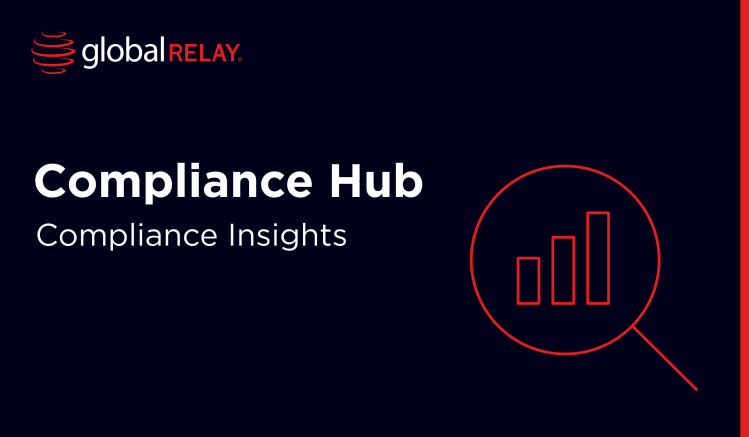
GMP compliance in life sciences with next-gen tech
Life sciences companies face mounting pressure to meet stringent FDA and EMA manufacturing standards without compromising compliance. Next-gen tech in the form of B2B SaaS compliance solutions is helping pharmaceutical companies to maintain regulatory approval and make strategic advancements.
Written by a human
In Brief:
- Digital technologies are transforming how companies handle Good Manufacturing Practice (GMP) documentation, automation, and process validation requirements
- B2B SaaS compliance solutions are helping the life sciences and healthcare industry navigate quality standards via real-time monitoring and deviation detection across production lines
- GMP compliance in life sciences represents a new chapter in streamlining processes, helping organizations make potentially market-leading gains in quality control, sustainability, and customer satisfaction
The stakes have never been higher for GMP compliance life sciences companies in 2025. Regulatory bodies like the Food and Drug Administration (FDA) and the European Medicines Agency (EMA) continue to tighten manufacturing requirements, demanding unprecedented precision in every aspect of production.
Just as in other industries, advanced technologies, including artificial intelligence (AI) are revolutionizing how life sciences companies approach regulatory excellence. These innovations don’t just help meet requirements; they also create opportunities for operational efficiency, cost reduction, and competitive differentiation.
So, what once seemed like insurmountable compliance burdens are now becoming strategic advantages for forward-thinking organizations that leverage technology and B2B SaaS compliance solutions.
The path to navigate these compliance challenges involves partnering with specialized providers who understand both regulatory demands and technological possibilities to find the perfect fit.
Streamlining GMP documentation and process validation
Accurate recordkeeping is vital to regulatory success, yet it often presents one of the most complex areas to bring into line with compliance standards. Maintaining comprehensive GMP documentation while validating complex manufacturing processes under FDA 21 CFR Part 211 presents ongoing challenges for maintaining manufacturing regulatory compliance. In particular, areas that create compliance friction typically include:
- Manual recordkeeping is laborious and leads to inconsistencies and transcription errors, in addition to creating storage challenges
- Version control becomes difficult when companies operate multiple manufacturing sites
- Audit trails require extensive manual compilation and review without adequate workflows or digital batch records
- Process validation documentation often lacks real-time updates
So, how can organizations use technology to improve their processes and systems, while enhancing the integrity of their data and traceability of their products?
Tech solutions that streamline GMP documentation and process validation enable organizations not only to meet stringent compliance standards but also to make operational efficiency gains and consequently boost productivity.
Some of the technology-driven solutions available right now that are enhancing compliance efforts include:
- Digital batch records eliminate handwriting interpretation issues, reduce errors, and streamline audit processes
- Automated validation tools minimize the risks of mistakes and speed up approval workflows
- Cloud-based systems ensure consistent, instant access to data across global operations
In an article showcasing AGC Pharma Chemical’s digital transformation, the company, which has bases in Spain and Japan, has elevated its manufacturing services in line with the pharma industry’s highest quality standards. It’s done this by integrating its systems with SaaS solutions, and digitizing batch records, logbooks, and qualification protocols. Eliminating paper records has facilitated compliance and enhanced the sustainability of the firm.
Of course, digital transformation takes time and resources, and B2B SaaS compliance solutions are becoming essential for companies seeking to modernize their documentation processes. These platforms integrate seamlessly with existing manufacturing execution systems, providing real-time visibility into production status and regulatory compliance metrics.
Ensuring supply chain traceability under GMP standards
Recent revisions to GMP Annex 1 have elevated supply chain transparency requirements in Europe, making end-to-end traceability more critical than ever. Companies must now demonstrate complete visibility from raw material sourcing through final product distribution, all while maintaining data integrity and preventing contamination risks.
Ensuring end-to-end supply chain transparency requires organizations to:
- Achieve consistent processes across multiple suppliers and contract manufacturers and prevent visibility gaps
- Authenticate raw materials across multiple manufacturing sites
- Protect against counterfeit components, which threaten product safety and regulatory compliance
- Prevent data silos, which create blockages to achieving comprehensive traceability reporting
Supply chain traceability for GMP 2025 requirements demand sophisticated technology platforms that can handle massive data volumes while maintaining security and accessibility.
Some of the market’s most innovative traceability solutions to counter these challenges include:
- Blockchain-based platforms that create immutable supply chain records
- IoT sensors that provide real-time environmental monitoring during transport
- Serialization technologies for individual product tracking
- Secure data platforms that integrate information from multiple supply chain partners
Leading pharmaceutical companies are implementing comprehensive tracking systems that monitor everything from temperature fluctuations during shipping to raw material batch genealogy. And today’s solutions leverage AI in new ways to make processes and systems even more accurate and streamlined.
AI’s subtle impact on GMP quality control monitoring
AI is quietly revolutionizing quality control processes across life sciences manufacturing. Rather than replacing human expertise, AI in GMP quality monitoring enhances decision-making by identifying patterns and anomalies that might escape manual review.
AI applications in quality control
- Real-time deviation detection prevents quality issues before they impact production
- Predictive maintenance algorithms reduce equipment failures and contamination risks
- Automated visual inspection systems identify defects with greater accuracy than manual processes
- Machine learning models optimize process parameters for consistent quality outcomes
Benefits of AI integration
The benefits of integrating AI into GMP are widespread and significant, with some of the key gains including:
- Continuous monitoring capabilities that exceed human capacity limitations
- Data-driven insights to improve process understanding and control
- Automated alerts that enable rapid response to quality deviations
- Historical trend analysis to identify improvement opportunities
The GMP compliance challenges that life sciences companies face in 2025 are increasingly being addressed through intelligent automation. AI systems can simultaneously monitor hundreds of process parameters, identifying subtle correlations that indicate potential quality issues before they become serious problems.
Major pharmaceutical manufacturers are implementing AI-powered quality control systems across their biologics manufacturing networks, with machine learning algorithms analyzing production data in real-time to automatically adjust process parameters for optimal quality maintenance. These systems have demonstrated the ability to prevent potential batch failures while reducing manufacturing waste, saving significant costs, and ensuring consistent product quality.
These AI quality control GMP systems integrate seamlessly with existing manufacturing infrastructure, providing enhanced oversight without disrupting established workflows. Plus, the technology learns from historical data and continuously improves its ability to predict and prevent quality issues.
Final thoughts
For GMP compliance, life sciences companies in 2025 must leverage technology to navigate documentation management and implement robust supply chain traceability for GMP, while embracing AI-powered quality control monitoring. The strategic implementation of these technology-driven solutions can transform compliance from a cost center into a competitive advantage with widespread gains in quality, sustainability, and personnel.
Partnering with a specialized technology provider like Global Relay that understands both regulatory requirements and operational realities offers a clear path forward. Global Relay’s AI-powered cloud archiving and compliance surveillance solutions ensure secure data management, GMP documentation automation, and maintain audit-ready compliance for FDA and EMA inspections.
Learn more about Global Relay’s secure, automated GMP documentation solutions for healthcare and life sciences.
